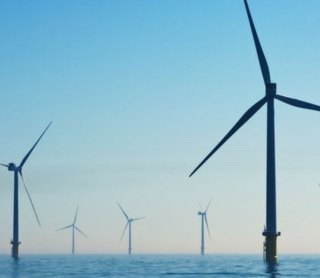As many people in the offshore wind industry are aware, the Bureau of Ocean Energy Management (BOEM) released a Supplemental Environmental Impact Statement (SEIS) for the Vineyard Wind Project in June 2020. BOEM determined that the SEIS was necessary, primarily to analyze an expanded cumulative activities scenario not considered in the Vineyard Wind Draft EIS released in December 2018. The SEIS includes a broader scope of reasonably foreseeable offshore wind development on the Atlantic Outer Continental Shelf (OCS), as follows: projects with approved or submitted construction and operations plans (COPs), projects with power offtakes awarded or state scheduled, announced or future planned offtake solicitations, and any projects that developers have publicly announced.
The Vineyard Wind Project National Environmental Policy Act (NEPA) process has been watched closely by the offshore wind development community due to its groundbreaking environmental review and permitting process in the burgeoning U.S. offshore wind market. Delays associated with the Vineyard Wind NEPA process were observed with caution by the offshore wind industry and created uncertainty for developers working through their own BOEM permitting processes, which were paused in large part while the SEIS was being developed. The release of the Vineyard Wind Project SEIS provides more certainty and efficiencies for other East Coast projects, as they are able to capitalize on the SEIS analyses and associated data. In addition, it will give NEPA practitioners and permit managers a clearer expectation of cumulative impact scenarios and the level of required analysis, which should streamline the process.
One benefit for the trailing California offshore wind development market is that it can take advantage of the lessons learned from the BOEM NEPA processes on the Atlantic OCS. Specifically, establishing a comprehensive cumulative scenario that may stem from future offshore wind development in all proposed or likely lease areas along the West Coast should be considered in upfront planning. Ideally, this should include state renewable energy portfolio standards, as both California and Oregon have indicated that offshore wind will play an important role in meeting their renewable energy goals. BOEM, the offshore wind development community, and stakeholders would all benefit from considering a broad range of cumulative impacts related to the potential for full buildout of offshore wind in California and Oregon.
As a first step, BOEM could include a robust cumulative activities scenario and impact analysis in the upcoming NEPA document for California’s proposed lease areas. Alternatively, this could be done in a standalone programmatic NEPA document. In May 2019, after BOEM issued the Vineyard Wind Draft EIS, BOEM published National Environmental Policy Act Documentation for Impact-Producing Factors in the Offshore Wind Cumulative Impacts Scenario on the North Atlantic Outer Continental Shelf (available here). This document provides guidance on impact-producing factors as well as on a cumulative activities scenario for offshore wind projects. While this document is helpful, a hybrid approach could be taken in California that also includes a robust cumulative impact analysis on resources like the Vineyard Wind SEIS does, but on a programmatic level. This would set the stage to tie to project-specific NEPA analyses and guide practitioners regarding expectations, impacts, and mitigation opportunities, as well as fostering a better understanding of environment benefits and effects from offshore wind on the West Coast.
